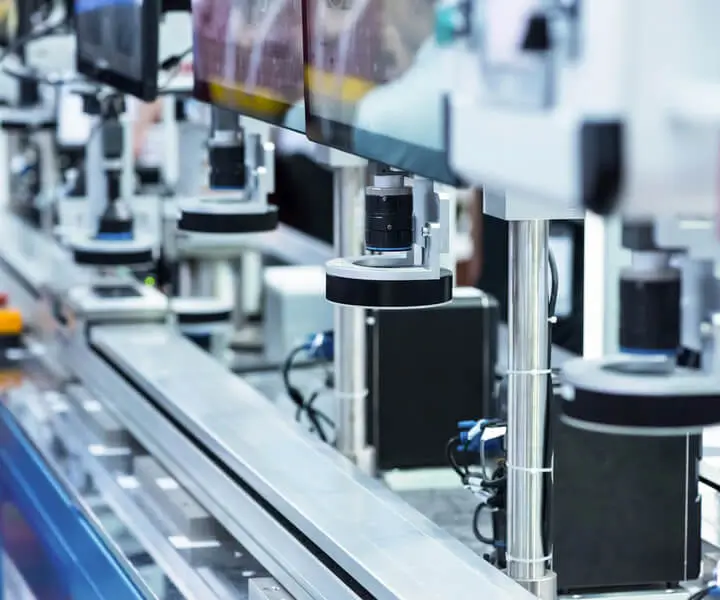part 1:
Unraveling the Mysteries of Servo Motor Encoder Problems: A Comprehensive Guide
In the realm of modern automation, servo motors serve as the backbone of precise motion control. From robotic arms to CNC machines, their accuracy and reliability are vital — but lurking behind their impressive performance are tiny yet critical components known as encoders. These devices act as the motor’s eyes and ears, translating rotational movement into electronic signals that allow for real-time position feedback. When encoders falter, the entire system feels the ripple effect, leading to erratic motion, reduced accuracy, or even catastrophic failures.

Understanding the Role of Encoders in Servo Motors
Before diving into the common problems, it's worth appreciating why encoders are so essential. Essentially, they measure the motor shaft's position, speed, and direction, providing critical feedback to the control system. Encoders come in two primary types: incremental and absolute. Incremental encoders track changes in position relative to a starting point, while absolute encoders provide a unique position value at all times. Both types rely on optical, magnetic, or magnetic-optical sensing mechanisms to generate signals corresponding to shaft rotation.
The integrity of these signals directly affects the stability and precision of servo control. A healthy encoder ensures the system responds accurately to commands, maintains positional stability, and operates efficiently. Conversely, encoder issues can cause jitter, missed steps, or system shutdowns, underscoring the importance of understanding their troubleshooting.
Common Signs of Encoder Problems
If you're dealing with a servo system that’s suddenly behaving unpredictably, it’s often the encoder—though other factors could be at play. Here are typical signs pointing to encoder issues:
Position errors or jumps: Unexpected leaps or shifts in position readings during operation. Intermittent or missing signals: The controller occasionally receives incomplete or no feedback. Inconsistent speed readings: Divergence between actual motor speed and reported values. Error messages or alarms: Many servo drives alert users when encoder signals are lost or corrupted. Vibration or noise: Abnormal vibrations may stem from mechanical issues affecting encoder alignment.
Common Causes of Servo Encoder Problems
Let’s look at what frequently causes these symptoms. Understanding these causes helps in diagnosing and preventing future failures:
Electrical Interference: Machinery environments are rife with electromagnetic interference (EMI), which can distort encoder signals. Motors, variable frequency drives, and other high-current equipment generate EMI, leading to noisy signals.
Misalignment or Mechanical Damage: Encoders, especially optical ones, are sensitive to physical disturbances. Misalignment of the encoder shaft, contamination by dust or oil, or physical impacts can impair signal quality.
Wiring and Connection Issues: Loose, broken, or corroded connectors can cause intermittent signal loss. Since encoder signals are delicate and require proper shielding, wiring faults often lead to erratic behavior.
Encoder Wear and Tear: Over time, mechanical parts such as bearings, optical disks, or magnetic sensors degrade. Dust, dirt, and age can cause the encoder to deliver inaccurate readings.
Power Supply and Grounding Problems: Fluctuations in voltage or poor grounding can introduce noise into the signal, making it unreliable. Proper filtration and grounding are crucial to encoder longevity.
Temperature Extremes: High temperatures can warp mechanical components or affect electronic circuitry, impacting encoder performance.
Diagnosing Troublesome Encoders
Diagnosing encoder problems begins with a systematic approach:
Visual Inspection: Check for physical damage, dirt accumulation, or misalignment. Clean the encoder if necessary, following manufacturer recommendations.
Signal Testing: Use an oscilloscope or a specialized testing device to examine encoder outputs. Look for clean, consistent waveforms—any irregularities indicate problems.
Check Wiring and Connections: Ensure connectors are secure, wires are intact, and shielding is in place to minimize EMI effects.
Verify Power and Grounding: Confirm that the encoder’s power supply is stable and proper grounding practices are followed.
Mechanical Checks: Inspect bearings and shafts for wear or misalignment. Replace any damaged components.
Preventive Measures and Best Practices
Prevention is always better than cure. Here are some strategies to mitigate encoder problems:
Use high-quality, shielded cables suitable for industrial environments. Properly align and mount encoders to avoid mechanical stress. Implement filtering circuits to reduce electrical noise. Regularly clean and inspect encoders as part of scheduled maintenance. Ensure that wiring connections are tight and corrosion-free. Choose encoders rated for the operating temperature range and environmental conditions.
The Impact of Encoder Failures in Industry
In industrial settings, encoder failures can lead to costly downtimes, defective products, or even safety hazards. Recognizing early signs and understanding the root causes can save time and money, and help maintain the seamless operation of complex machinery.
This brings us to the critical next step: knowing how to troubleshoot encoder problems efficiently, and when to seek professional repair or replacement. The journey to robust and reliable servo systems begins with understanding their smallest yet most vital components—like the encoders—and ensuring they keep up with the demanding pace of automation.
Would you like the second part now?
Kpower has delivered professional drive system solutions to over 500 enterprise clients globally with products covering various fields such as Smart Home Systems, Automatic Electronics, Robotics, Precision Agriculture, Drones, and Industrial Automation.




































